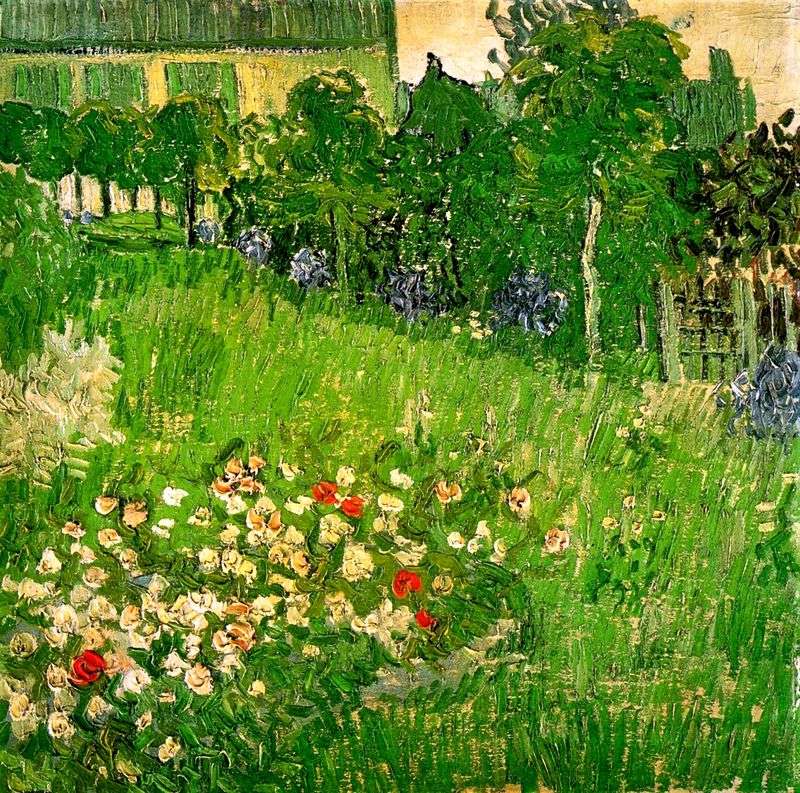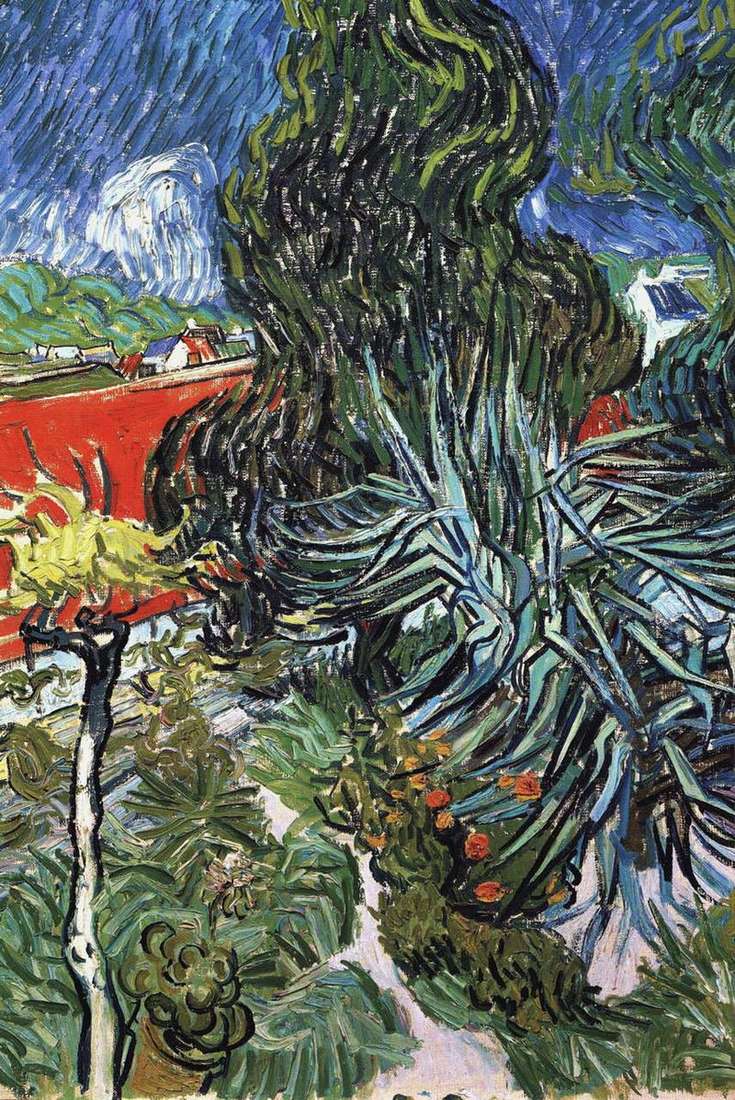
Over also was home to the French artist from the generation “before the Impressionists”, Charles Dobigny. Van Gogh planned to write a picture as a sign of respect for the artist, who so much figured in his “musée imaginaire” over the past two decades.
On horizontal canvases, he twice painted the house and the garden of Dobinya; one of these options was going to send his brother Theo to Paris as one of three paintings that were to convey to the troubled townspeople a calm and restoring force rural landscape. This unusual square canvas is often studied instead of later versions.
This size creates the effect of the viewer’s penetration into the garden and its riot of abandoned riches. Nevertheless, the picture has such a scale that the house itself seems very distant, practically fenced off by rows of trees, closed by its own shutters of windows. Nevertheless, this disordered space and uneven surface evoke memories.
Van Gogh uses almost an impressionistic technique and palette to portray the artist’s garden, which became a bridge between the Barbizon school and the early Impressionists. In the late 1860s, critics loudly complained about the lack of completeness and schematism in the works of Dobigny. His paintings were too impressionistic.
 The Garden of Poets by Vincent Van Gogh
The Garden of Poets by Vincent Van Gogh The Garden of the Poet (Garden of Poets) by Vincent Van Gogh
The Garden of the Poet (Garden of Poets) by Vincent Van Gogh Margaret Gachet in the Garden by Vincent Van Gogh
Margaret Gachet in the Garden by Vincent Van Gogh Memories of the Garden in Etten by Vincent Van Gogh
Memories of the Garden in Etten by Vincent Van Gogh Dr. Gachet’s Garden in Over by Vincent Van Gogh
Dr. Gachet’s Garden in Over by Vincent Van Gogh Wheat fields, the plain of Over by Vincent Van Gogh
Wheat fields, the plain of Over by Vincent Van Gogh Blooming Garden by Vincent Van Gogh
Blooming Garden by Vincent Van Gogh A path in the public garden in Arles by Vincent Van Gogh
A path in the public garden in Arles by Vincent Van Gogh